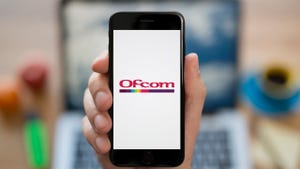US telcos set to shell out for more spectrum, starting with 2.5 GHz in JulyUS telcos set to shell out for more spectrum, starting with 2.5 GHz in July
The US's next spectrum auction will come as soon as July, Federal Communications Commission chairwoman Jessica Rosenworcel revealed at Mobile World Congress this week.
March 2, 2022

The US’s next spectrum auction will come as soon as July, Federal Communications Commission chairwoman Jessica Rosenworcel revealed at Mobile World Congress this week.
The regulatory head outlined plans to sell off the 2.5 GHz band this summer as well as looking further ahead to additional mid-band spectrum sales as well as the use of frequencies above 7 GHz for 6G mobile services, according to her keynote remarks, published by the FCC.
“The big reveal,” as Rosenworcel put it, was the news of the 2.5 GHz sale, which represents the country’s largest swathe of contiguous mid-band spectrum below 3 GHz. The airwaves will enable operators to extend 5G services into less populated areas. It’s not a huge reveal, given that we already knew that 2.5 GHz would be next on the block after 3.45 GHz, the sale of which concluded at the back end of last year. But it’s the closest we have come to getting an actual date for the auction.
And that’s something that one operator in particular has been hankering after. Back in September T-Mobile US published a letter to the FCC in which it urged the regulator to set a date for the 2.5 GHz sale and push forward with setting out the auction T&Cs.
T-Mobile already has 2.5 GHz frequencies in its possession, thanks to its merger with Sprint almost two years ago. But clearly it wants more, to help it continue with its 5G rollout. The other big players, AT&T and Verizon, have made public comments on the terms of the 2.5 GHz auction itself, but seem less keen to snap up frequencies than T-Mobile.
Naturally, Rosenworcel did not share any further information at this stage, be it on auction conditions, format or pricing. But it’s fair to say that given that the frequencies are designed for use outside of densely populated urban areas, we’re looking at smaller sums than recent US auctions have attracted.
Verizon famously spent almost $53 billion in the $94 billion C-band auction this time last year, while AT&T emerged as the big spender in the $22.5 billion 3.45 GHz sale, shelling out $9.1 billion. It looks like T-Mobile is likely to be the frontrunner in the 2.5 GHz auction, but its spend will be in a different ballpark.
That said, 2.5 GHz is not the only upcoming frequency auction in the US.
As Rosenworcel reminded her MWC audience that once 2.5 GHz is done and dusted the regulator will turn its attention to opening up the new tranche of mid-band frequencies between 3.1 GHz and 3.45 GHz. And beyond that, the chairwoman is already urging the industry to start thinking about spectrum for 6G.
“While the 6G standard doesn’t exist just yet, a lot of research around it right now is about transmitting data in ultra-high frequencies,” Rosenworcel said. “We’re talking hundreds-of-GHz or even the terahertz range. That’s exciting, but let’s not forget the lessons we’ve learned about millimetre wave spectrum and 5G. These waves are fragile. While there’s a lot of this spectrum available for wireless use, it doesn’t travel very far and right now it is awfully costly to deploy,” she warned, preaching to the choir, to some extent.
But lower bands will be important for 6G too.
“I believe for 6G we need to start planning now to identify spectrum in the 7 GHz-15 GHz range that can support faster speeds and wider coverage,” she said. “I also believe it’s not too early to harmonize these efforts across the world.”
It’s also not too early for telecoms operators to start doing the financial planning for 6G. Those frequencies are unlikely to come cheap.
About the Author
You May Also Like










.png?width=300&auto=webp&quality=80&disable=upscale)


_1.jpg?width=300&auto=webp&quality=80&disable=upscale)